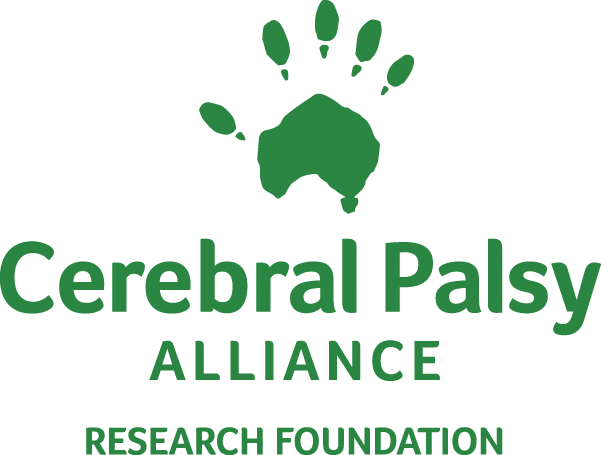These grants are selected on scientific merit by reviewers from around the world. Thanks to your support, we can continue funding the best US-based research to change what’s possible for cerebral palsy.

Dr Evelyn Shih
Children’s Hospital of Philadelphia
Emerging Researcher Grant
Dissection of the Bioenergetic Network of the Neurovascular Unit in Focal Ischemic Stroke: Building a Foundation to Design Mitochondrial Therapeutics for Childhood Stroke
Stroke is the most common cause of hemiparetic cerebral palsy. Ischemic stroke occurs when a blood vessel to the brain is blocked, resulting in brain cell death. Stroke affects ~5,000 children in the USA yearly. The risk of stroke is highest around the time of birth (perinatal), occurring in ~1 in 4000 live births. Up to 70-80% of children who suffer perinatal stroke develop cerebral palsy. Currently, the only treatment for stroke is restoring blood flow through the blocked vessel. Unfortunately, >90% of children and all babies with stroke are not eligible for these treatments. Thus, new treatments are needed.
Mitochondria are the “energy powerhouse” of the body. In stroke, mitochondria become dysfunctional and cause harm, leading to brain cell death. We aim to identify mitochondrial targets for new treatments. In order to design effective treatments, we first need to understand the changes that occur within mitochondria during stroke and how these cause cell death. We propose a 2 year study using a novel mouse model of childhood stroke to investigate the effect of mitochondrial dysfunction in 2 main brain cell types (neurons and astrocytes). Using genetic engineering, we will induce mitochondrial mutations in neurons and astrocytes, separately, and measure stroke size and motor disability. We postulate that selective mitochondrial dysfunction in neurons will be protective by reduction of damaging oxidative stress. In contrast, we hypothesize that selective mitochondrial dysfunction in astrocytes will be harmful due to the loss of cues that keep brain cells alive. Thus, a treatment that indiscriminately affects mitochondria in all cell types would be unlikely to work. We will test a potential cell-selective therapeutic strategy to reduce stroke severity. This study has high potential to illuminate new approaches for treatments to reduce brain injury and improve stroke-related disability, including cerebral palsy.

Dr Dawn Gano
University of California, San Francisco
Project Grant
Trexo Robotic Exoskeleton Training in Non-Ambulatory Children <2 Years (TREx) Study/em>
New strategies to improve motor function in young children with cerebral palsy (CP) are needed. Our goal is to bring children with CP to the forefront of the implementation of robotic exoskeleton technology. We will conduct the first study of robotic exoskeleton training in children with delayed motor skills or a diagnosis of CP at ages 1-2 years. We will recruit 10 children to participate in an exoskeleton-training program to determine the acceptability and feasibility of robotic rehabilitation. We will evaluate whether the exoskeleton improves range of motion, strength and/or motor function. To learn how robotics may address the needs and rehabilitation goals of participating children, we will conduct interviews and focus groups with parents of participants and clinicians. The long-term goal of this study is to apply what we learn to the design of a clinical trial that can determine if exoskeleton rehabilitation is more effective than standard rehabilitation.

Dr Zachary Vesoulis
Washington University in St. Louis
Project Grant
NIRS Monitoring to Stop Injury
Premature infants continue to experience brain injury and subsequent neurodevelopmental disability at unacceptable rates. Injury is caused by rapidly fluctuating blood pressures and oxygen levels, common in the early NICU course. The current standard of care monitoring (pulse oximetry) provides inadequate information to guide ventilator and oxygen management for optimal neuroprotection. Near-infrared spectroscopy (NIRS) is a light-based non-invasive device, approved for use in neonates, which provides information about oxygen levels in the brain, something not easily available in any other way. There are an increasing number of reports which link low oxygen levels to brain injury and it is a high-priority target for intervention.
In this application, we propose to randomize preterm infants to either a “standard of care” group or a “NIRS-directed” group. In this second group, the infants will have NIRS monitoring for the first 72 hours after birth. If their brain oxygen level goes outside of the normal range, a standardized treatment protocol using evidence-based strategies will be employed. The primary outcome of this study will be a reduction in death or severe brain injury. This project was piloted in a group of 166 infants with a remarkable 25% reduction in this outcome, suggesting significant potential benefits.

A/Prof Colleen Peyton
Northwestern University
Project Grant
The ontogeny of fidgety movements in infants at risk of cerebral palsy
The international guidelines for the early detection of cerebral palsy (CP) established a decision-making framework to facilitate earlier and more accurate diagnosis of CP in infancy. The Prechtl General Movement Assessment (GMA) is a clinical tool that was recommended as one of the best motor assessments to identify CP in infants less than 5 months old. While the GMA has been proven to be a robust predictor of CP, the age at which the test is most accurate is less clear. The presence of “fidgety movements,” an age-specific marker of typical motor development, was traditionally believed to be present and detectable at 12 weeks post-term age. However, in the years since the guidelines have been published, new evidence has emerged challenging this timeframe. The emergence of fidgety movements should be studied rigorously as there may be variation among high-risk groups. This has not yet been tested in a large, diverse sample of infants.
Our objective is to understand the time at which the GMA is most effective to improve accuracy of early detection of cerebral palsy. We will compare the onset of fidgety movements in children with medically complex histories to a healthy control group. Parents will be able to obtain GMA data at 6 time points in development (10, 12, 14, 16, 18, 20 weeks post term age), using the Baby Moves smartphone application. Over the course of two years, infants from Europe, Australia, and North America will be enrolled in the study. The movements will be analyzed by expert GMA assessors to determine the time when fidgety movements are most clearly present.
It is imperative that clinicians following the early detection guidelines understand the optimal time to use the GMA in order to accurately identify infants with CP.

